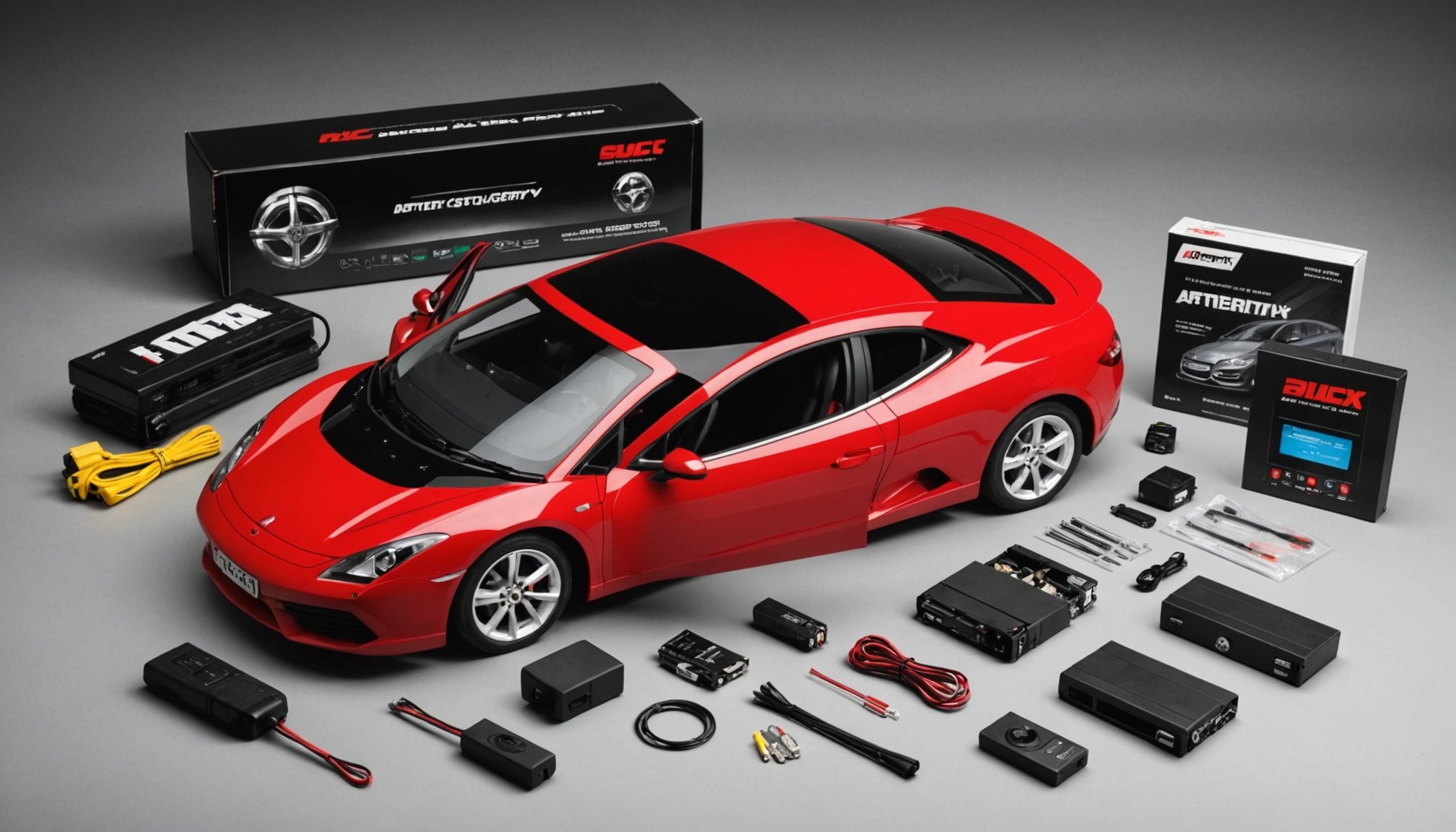Overview of Aftermarket Car Security Systems
Aftermarket car security systems play a pivotal role in enhancing vehicle protection beyond the factory settings, offering bespoke vehicle security options tailored to individual needs. Across the UK market, these systems are crucial due to the rising car theft rates and the need for comprehensive protection strategies.
In essence, aftermarket car security systems include a variety of options such as alarms, immobilisers, tracking devices, and dash cams. Each system serves a unique purpose—from deterring theft through loud alarms to allowing vehicle tracking and recovery. The choice of system largely depends on the car owner’s specific security concerns and budget.
Topic to read : Ultimate troubleshooting manual for repairing malfunctioning electric windows in uk cars: a comprehensive step-by-step approach
Upgrading a vehicle’s security is particularly important in the UK due to its high car theft rates compared to European counterparts. Investing in robust systems can mitigate theft risks and possibly reduce insurance premiums; insurers often offer discounts for enhanced security measures.
In summary, when exploring vehicle security options in the UK market, buyers can choose from simple alarms to sophisticated tracking systems, all designed to bolster vehicle protection and provide peace of mind. These solutions prove invaluable in safeguarding vehicles and enhancing overall security.
Also read : Ultimate diy handbook: installing an aftermarket sunroof in your uk vehicle
Tools and Materials Needed for Installation
When embarking on a DIY car security system installation, equipping yourself with the necessary installation tools and materials is crucial. First and foremost, ensure you have basic DIY tools such as screwdrivers, pliers, and wire cutters. A multimeter is vital for checking electrical connections, while a soldering iron can enhance durability by securing wires. In addition to these essentials, a wiring toolkit simplifies connectivity tasks.
Selecting the correct materials for car security is equally important. Quality wiring and connectors minimise installation errors. Heat shrink tubing helps insulate connections, preventing short circuits. You can source these materials from automotive or electronics supply stores, sometimes bundled in DIY kits.
Safety cannot be overlooked during the installation. Wearing safety goggles and gloves is recommended to protect against electric shocks or cuts. A dust mask ensures safe respirable air if you drill or sand any component.
By being well-prepared with the right DIY tools and safety equipment, the installation process becomes smoother and safer. Following this preparation empowers users to install car security systems effectively and confidently.
Step-by-Step Installation Guide
Embarking on a DIY installation of a car security system necessitates a clear understanding of the available options. The path to a successful setup begins with car security installation steps tailored to the chosen system type. For instance, installing an alarm system typically involves mounting the siren in the engine bay, connecting sensors to door and bonnet contacts, and wiring the control unit to the car battery.
Before delving into the specifics, crucial preparatory steps ensure a smooth installation process. Begin by reviewing the car’s wiring diagram and identifying connection points for installation. Gather all necessary installation tools and ensure the power source is disconnected to prevent electrical hazards.
While following the DIY installation guide, ensure precision in connecting wires—mismatched connections can lead to malfunctioning systems. For systems requiring activation codes or Bluetooth pairing, refer to the manufacturer’s manual for specific system setup instructions.
To bolster the chances of a successful installation, ensure all components are securely fitted, and all wiring is double-checked. Patience and attention to detail are vital; however, if complications arise, seeking expert advice is recommended.
User Reviews and Comparisons of Security Systems
When evaluating car security system reviews, understanding user experiences can highlight the strengths and weaknesses of different options. User testimonials often reveal insights into effectiveness, detailing how well various systems deter theft and respond to unauthorized access.
One of the primary points of consideration is the comparison of features. Some users find systems with GPS tracking and smartphone integration more useful, offering real-time updates and remote control. Others may prioritise loud alarms and immobilisers for their immediate deterrent effects.
In terms of user satisfaction, reviews often shed light on the ease of installation and daily use. Systems rated highly tend to be those with straightforward DIY installation guides and user-friendly interfaces. Conversely, systems with complex setups or frequent common installation problems may receive less favourable feedback.
Additionally, comparisons of security options can illuminate cost-effectiveness, balancing price with the peace of mind provided. Affordable yet effective systems are preferred, especially those that enhance vehicle security without being overly complicated or expensive.
By exploring these reviews, potential buyers gain valuable insights, empowering them to make informed decisions best suited to their individual needs and vehicle requirements.
Personalizing Your Car Security System
Personalising your car security system enhances vehicle security while catering to your specific preferences. The customization options allow for tailored settings that align with user needs. Essential features include adjusting user settings to manage alert levels, time settings, and the sensitivity of sensors, allowing a more nuanced approach to security measures.
Car security personalization offers diverse features designed to optimise vehicle protection. Owners can opt for customization options such as integrating voice alerts or personalised access codes, providing added security and convenience. Adjusting sensitivity levels of motion sensors or customising alarm sounds helps deter but not inconvenience with false alerts.
Modern systems often include smartphone apps allowing remote access to settings, ensuring constant adaptability. To maximise the benefits, users should regularly review and adjust settings, particularly if vehicle usage patterns change.
Popular customization features include the integration of remote start/stop functions, which enhance comfort and security. By implementing features that fit lifestyle demands, car security is elevated beyond basic functionality, ensuring protection tailored to the owner’s requirements.
Incorporating these user settings transforms systems into powerful tools that not only protect but also adaptively integrate into daily use.
Compatibility with Various Car Models
Understanding car model compatibility is crucial when selecting aftermarket car security systems. Vehicles have diverse electronic and mechanical profiles, meaning not every system will seamlessly fit all models. To ensure you invest in an appropriate solution, begin by consulting resources that detail system compatibility for specific car models. Manufacturer websites often provide compatibility lists, ensuring your chosen aftermarket system fit is correct.
Having adaptable security systems is vital. Look for systems offering modular components or universal installation kits. These are designed to work across various car models, making them a flexible option for those concerned about vehicle security adaptability.
Before purchasing, verify your vehicle’s specifications and compare them with the system’s requirements. It’s advisable to check forums and connect with other car owners with similar models for their insights on system compatibility.
When in doubt, consult with professional installers or automotive electricians. They can offer tailored advice and ensure a smooth fit for your chosen security system. By prioritising compatibility, you’ll enhance your vehicle’s security without encountering installation headaches.
Legal Considerations in the UK
Before installing aftermarket car security systems in the UK, it’s essential to consider UK car security laws. These laws ensure that vehicle security devices meet certain legal requirements to avoid penalties or insurance implications. Compliance begins with checking if the security system is type-approved by insurers. Approved systems, often highlighted by Thatcham Research, provide assurance of meeting industry standards.
When selecting vehicle security options, consider necessary certifications. For instance, systems like immobilisers and alarms might need specific certifications to ensure they function within legal boundaries. It’s prudent to verify these certifications before purchase, as non-compliant installations might invalidate car insurance policies.
Another aspect of compliance is adherence to data protection laws. Modern systems with GPS tracking or smartphone integration must ensure personal data security. Vehicle owners must understand how their data is stored and shared by the security system provider and comply accordingly.
Failing to adhere to legal requirements can result in serious repercussions, including fines or increased insurance premiums. Staying informed about the latest legislation and consulting with specialists ensure both safety and legality in vehicle security enhancements.
Troubleshooting Common Issues
Navigating common installation problems in aftermarket car security systems can be daunting, but understanding potential pitfalls and solutions is essential. One prevalent issue is faulty wiring during the setup. Incorrect connections can lead to complete system failure. To remedy this, revisit the system setup instructions and use a multimeter to ensure proper electrical flow.
Signal interference is another common headache, often affecting devices with GPS tracking systems. This can be resolved by repositioning the device or eliminating nearby sources of electronic disturbance.
When troubleshooting car security, malfunctions in alarm systems may arise from sensor misalignment. Check sensor positions and calibrate them according to the manufacturer’s guidelines.
In some cases, DIY installation guides may not resolve intricate issues, leading to system errors or glitches. Step-by-step troubleshooting techniques such as resetting the system or updating the hardware software may prove beneficial. However, if problems persist, seeking professional help is advisable. Expert technicians can provide detailed diagnostics and solutions, ensuring your vehicle’s security performance remains uncompromised.
Always ensure any troubleshooting adheres to warranty terms to avoid accidental voiding.











